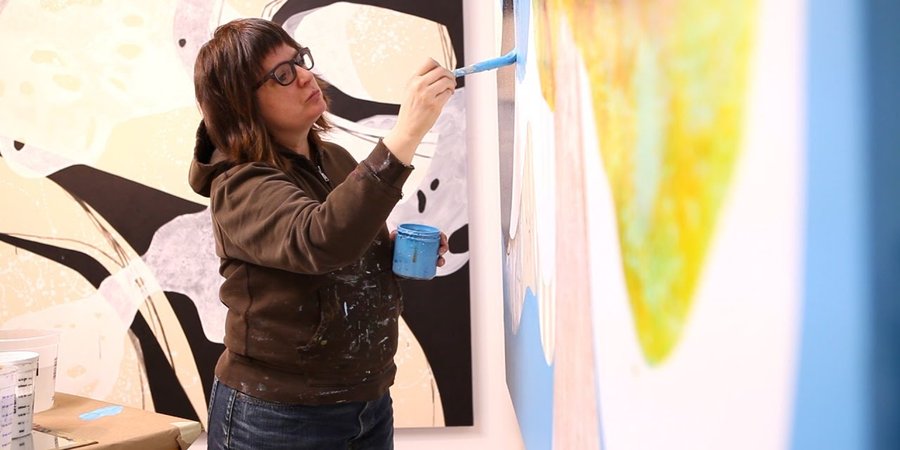exerpt

A Few Thoughts on Art Careers, Day Jobs, and Life Beyond School
1. Art is a 24/7 occupation.
2. There is no codified career path for artists. Each person makes it up as they go along.
3. The inner workings of the art world are often quite opaque (even for old-timers) – ask a lot of questions, find fellow travellers, and build a community around what you’re doing in the studio.
4. Try not to fixate on ‘breaking’ onto the scene. If you keep making interesting work, people will notice.
5. The standard post-graduation jobs – art handler, gallerina, artist’s assistant – often leave one feeling alienated from the very profession one wants to join.
6. Try out jobs that have nothing to do with art. Nonconforming life choices will enrich everything you do (including your work).
7. Move somewhere cheap for a while so you don’t need ten freelance jobs to support your studio practice.
8. If your day job does keep you away from your studio, be sure to make a gesture towards your art every day. Look up a grant or an artist. Buy some paint. Research a process. Stay connected to your ideas.
9. Don’t apply for everything under the sun just because you can. Grants and residencies are more than a notch on your belt or line on your CV. Read the fine print and apply thoughtfully – their benefits are calibrated for different stages in an artist’s career.
10. The art world is fickle and art careers have their ups and downs. You need to be able to work through the bust as well as the boom.
The Impossibility of Originality Has Been Completely Overstated
As any student or teacher can tell you, imitation is a time-honored mode of learning how to make and understand art. It’s then up to us to develop our own particular amalgam of influence, invention and experience.
Is it Important For Artists to Understand the Past?
Yes. For me, a big part of making art is creating a dialogue with artists from both the past and the future. I think of myself as being part of a long continuum of makers and thinkers. Painting in particular has a self-reflexive relationship with its own history. For this reason, it’s critical for painters to have a deep knowledge of the history of their own medium, including the evolution of the materials and tools used.
No comments:
Post a Comment